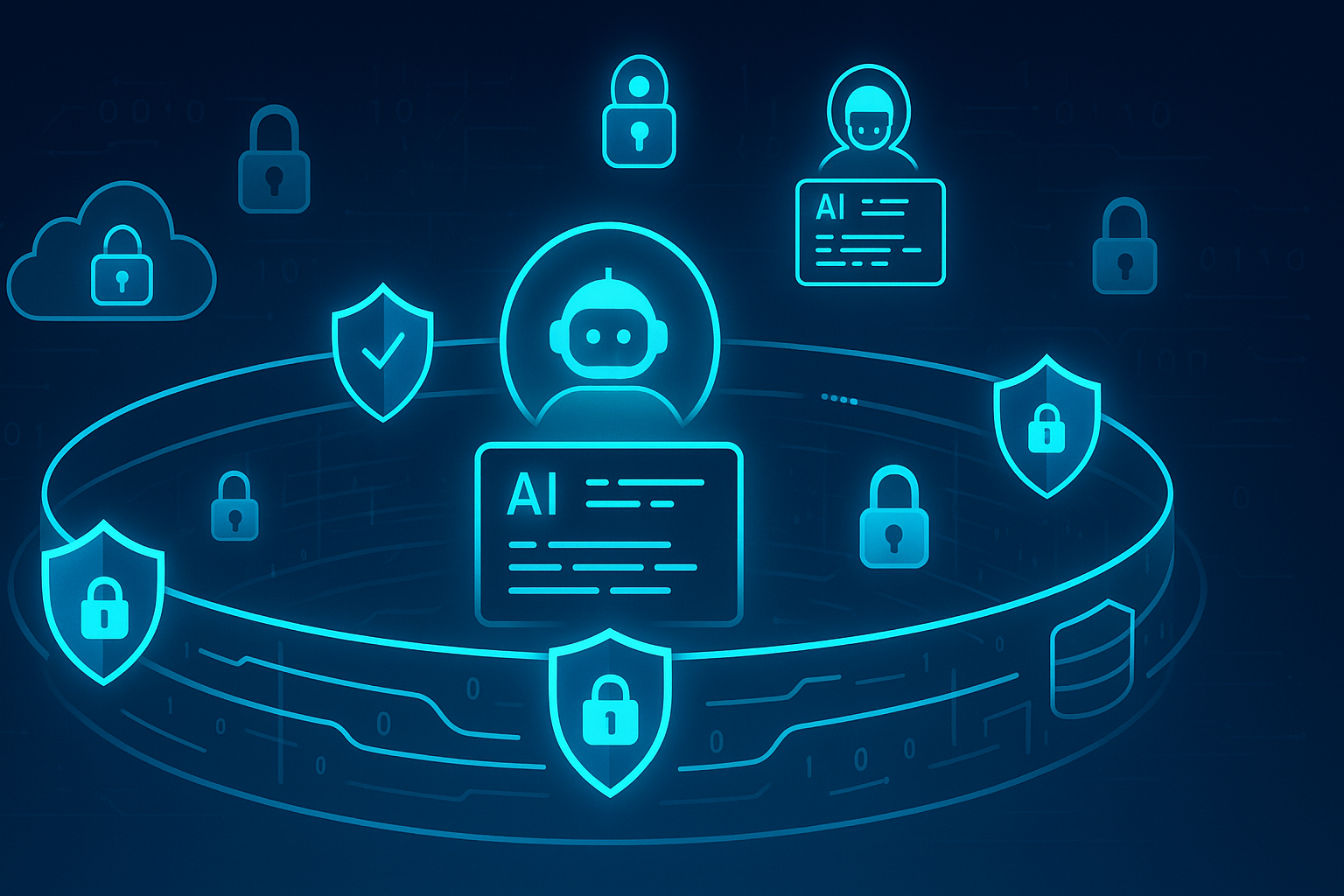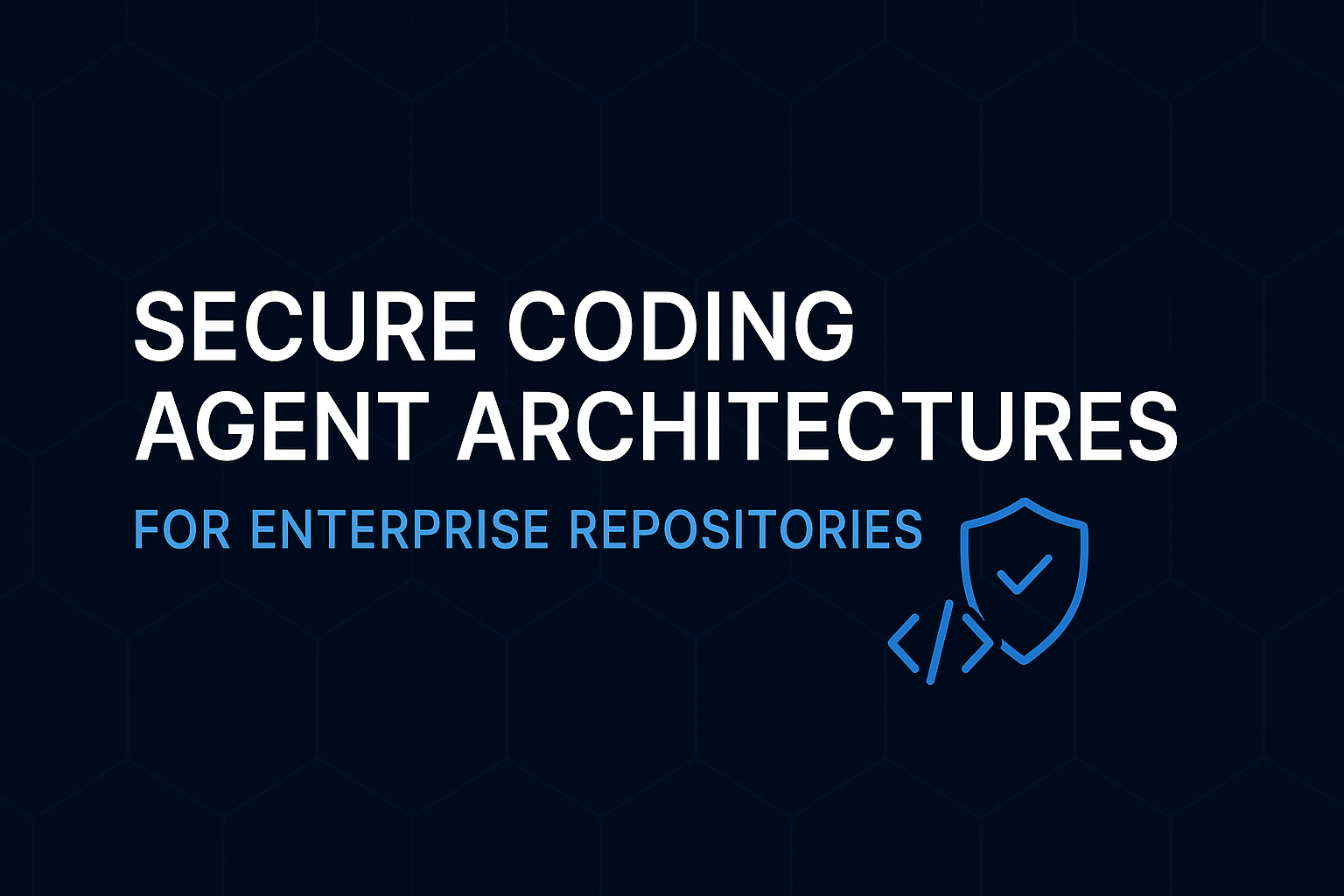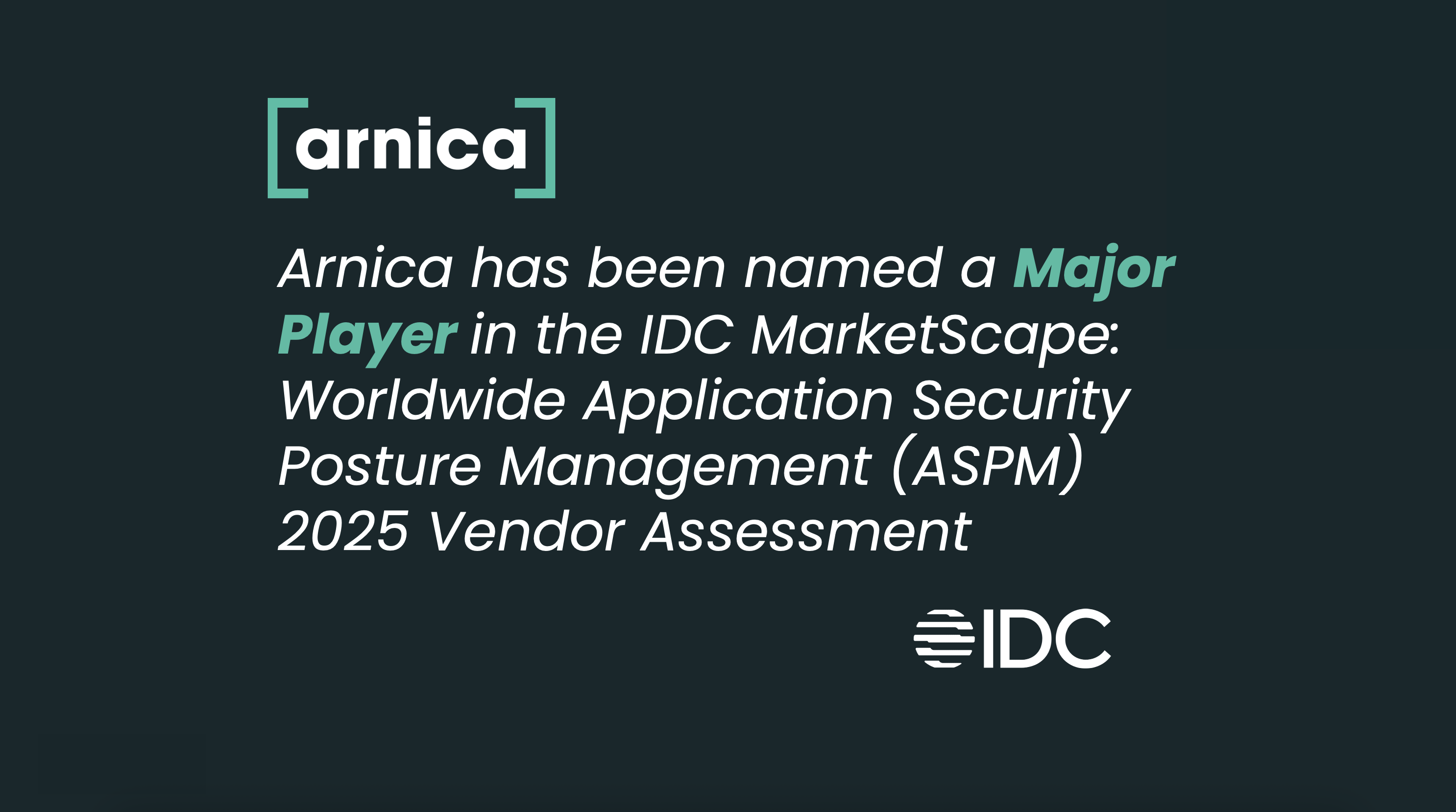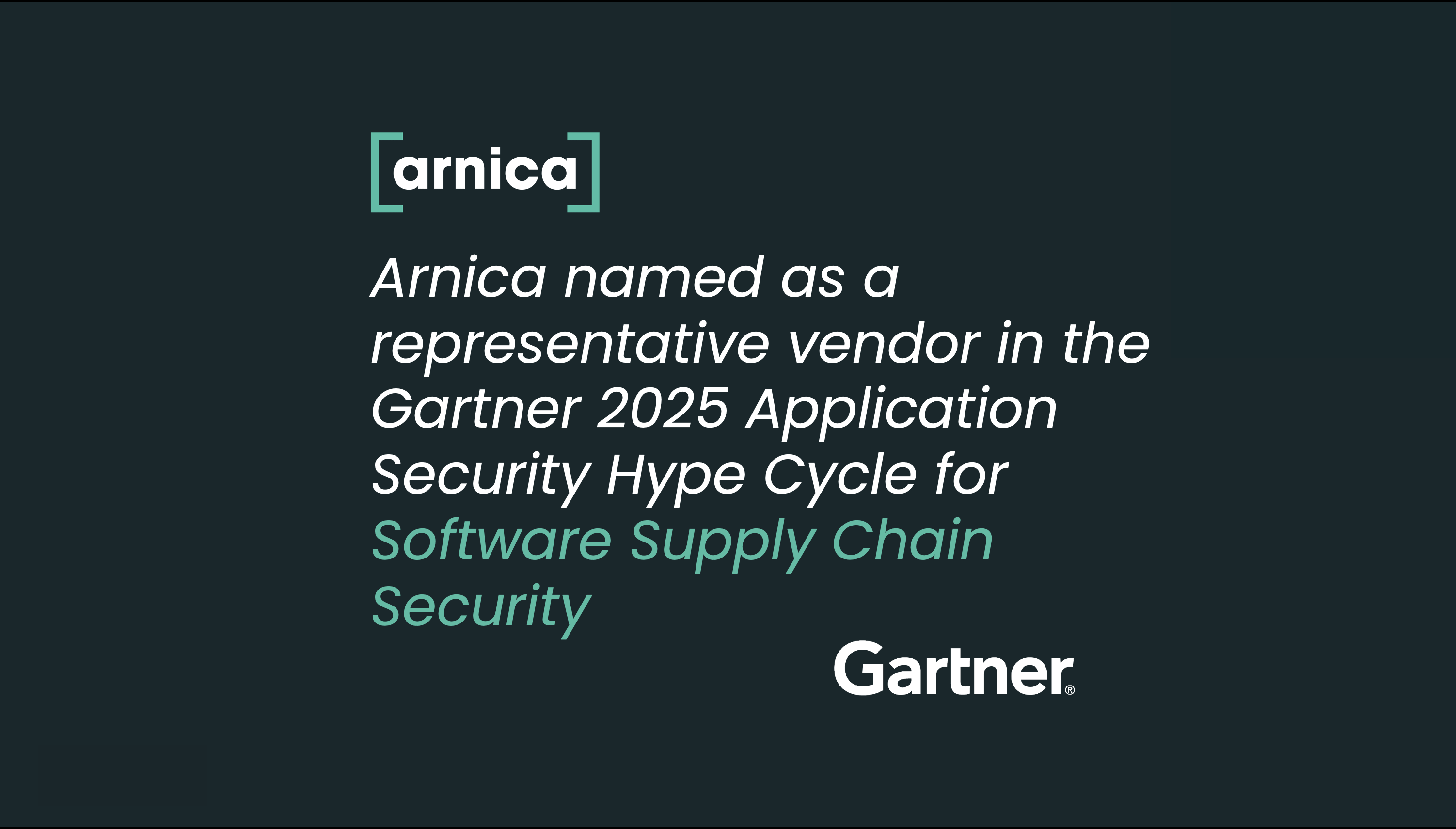Artificial intelligence has evolved from simple predictive systems to agentic AI capable of autonomous decision-making, coding, deploying applications, and integrating with production environments. These agents are not just assistants but active participants in the development and security lifecycle. They create opportunities for speed and innovation but also open doors to entirely new categories of risks.
In traditional security models, once a user or system was authenticated, they were often granted broad trust across networks and applications. This approach cannot work with autonomous agents that act continuously, learn dynamically, and often interact across multiple cloud and software environments. What is required instead is a Zero-Trust security model. In the context of Agentic Security & Governance, Zero-Trust is about enforcing continuous verification, minimizing permissions, and embedding adaptive guardrails across the lifecycle of agent-driven workflows.
This blog explores how to build a Zero-Trust model specifically designed for agentic AI, why it is essential, and the practical controls required to safeguard organizations that are increasingly relying on AI-driven pipelines.
Understanding the Shift: From Traditional Security to Agentic AI Security
Zero-Trust in the enterprise was originally designed for human users and endpoints. But agentic AI operates differently. Research already points to the scale of change: Gartner forecasts that by 2026, over 30% of large organizations will have adopted agentic AI systems inside their environments, and market analyses project the global agentic AI market to grow from USD 5.25 billion in 2024 to more than USD 100 billion by 2034.
Unlike traditional software, agents:
- Do not just access systems, they create new systems, applications, and workflows
- Can generate, modify, and deploy code in real time, introducing risks at machine speed.
- Are capable of connecting across multiple clouds and services without human approval if unchecked.
Early studies warn that this shift introduces entirely new categories of vulnerabilities, from secret leakage to autonomous misconfigurations, which makes a radical rethink of Zero-Trust architectures essential
This environment requires a radical rethink. The principles of Zero-Trust remain relevant, but they must be re-applied in the context of Coding-Agent Security, AI-Assisted Coding AppSec, and CI/CD & Workflow Guardrails for Agents. The challenge is not just about stopping attackers but about ensuring autonomous agents cannot unintentionally compromise security.
Core Principles of Zero-Trust for Agentic AI
Continuous Identity Verification
Every AI agent must be treated as a unique identity with dynamic authentication. Traditional static credentials are insufficient because they can be stolen, reused, or misapplied. Instead, organizations must rely on short-lived tokens, frequent key rotations, and contextual verification. Coupled with Access and Permission Management, this ensures agents operate strictly within the scope defined by policy.
Guardrails Within Coding Agents
AI is now deeply embedded in modern development, assisting with code generation, deployment, and automation. Traditional Zero-Trust approaches relied on CI/CD pipeline checkpoints to enforce security. But agentic AI moves faster than pipelines can keep up. Instead of waiting for code to pass through static gates, organizations need guardrails that operate inside the coding agents themselves.
This is the foundation of pipeline-less security. Rather than relying only on SAST, SCA, or IaC checks after the fact, guidelines are embedded directly into the agent’s decision-making process. With this approach, every line of code an AI generates is validated against organizational policies before it ever reaches a repository or production environment.
Arnica’s Arnie is built for this reality. Acting as an AI code protector, Arnie integrates policy enforcement, vulnerability detection, and secure-by-default practices directly into coding agents. This means organizations can block insecure or malicious outputs at the source, without slowing down development speed or relying solely on pipeline bottlenecks.
By reframing Zero-Trust in this way, security becomes proactive rather than reactive, ensuring that AI-driven coding is continuously aligned with enterprise-grade safeguards from the very start.
Secrets Management and Data Protection
A critical weakness in agent-driven coding environments is secret leakage. AI systems can inadvertently commit tokens, API keys, or credentials to repositories. Zero-Trust architectures must include Hardcoded Secret Detection, rapid Secrets Remediation, and ideally Automated Secrets Management. These measures ensure that even if an agent exposes sensitive information, remediation happens immediately without human delay.
Real-Time Monitoring and Adaptive Responses
Zero-Trust assumes no entity is inherently trustworthy. This means agent activity must be continuously monitored and evaluated in real time. Organizations should implement real-time security alerts and automated security workflows that adapt based on context. For instance, if an AI agent starts creating infrastructure configurations at an unusual time or from an unrecognized environment, automated policies should trigger Infrastructure as Code Security checks or suspend the action entirely.
The Building Blocks of a Zero-Trust Model for Agentic AI
Application Security for AI-Generated Code
Agent-driven development requires enhanced application security. Traditional approaches like manual code review cannot scale at the speed of AI. Instead, organizations need automation-first security:
- Coding-Agent Security ensures that AI-generated code follows organizational policies and is free of vulnerabilities. With Arnie, these safeguards move inside the coding agent itself, where code is validated in real time against security standards. Acting as an AI code protector, Arnie blocks insecure functions and policy violations before they are ever committed, enabling a pipeline-less approach that keeps development fast while ensuring enterprise-grade security.
- AI-Assisted Coding AppSec integrates AI guidance into testing, combining speed with accuracy.
- Advanced scans like SAST and SCA identify insecure functions or outdated dependencies in generated code before it reaches production.
This layered approach ensures that AI-generated code undergoes the same, if not stricter, validation as human-written code.
Cloud-Native and Multi-Cloud Controls
Agentic AI is rarely confined to one environment. Agents interact across AWS, Azure, GCP, and even on-premises systems. This makes Cloud-Native Application Security and Multi-Cloud Security Strategies essential. Zero-Trust models must enforce policies that restrict agents from performing unauthorized actions across cloud services. Cloud Service Integration is a key component here, ensuring consistent authentication and monitoring across providers.
Threat Intelligence and Predictive Analytics
Traditional monitoring often reacts after an event has occurred. With AI, the speed of operations requires predictive defense. Threat Intelligence and Predictive Analytics can study agent behavior patterns, detect anomalies, and block malicious or unintended activities before they escalate. This is particularly important in the Vibe-Coding Era AppSec, where natural language prompts guide coding behavior.
Compliance and Auditability
Zero-Trust for agentic AI must also meet external regulatory and compliance standards. Maintaining a Software Bill of Materials (SBOM) provides visibility into dependencies and helps with Regulatory Compliance for Software Development. Regular Security Compliance Audits ensure organizations can demonstrate adherence to industry frameworks while also verifying that AI agents operate within approved guidelines.
The Role of Zero-Trust in the Vibe-Coding Era
The Vibe-Coding Era AppSec represents a paradigm where coding is increasingly guided by prompts, not precise instructions. While this accelerates innovation, it also introduces unpredictability. A developer may ask an AI agent to “optimize for speed,” and the agent could introduce insecure shortcuts.
A Zero-Trust framework ensures accountability in this environment. Every request, prompt, and action by an agent is subject to policy enforcement. Combined with DevSecOps tools and pipelineless security solutions, organizations can balance the creativity of vibe-coding with the security discipline required for enterprise-grade systems.
From Concept to Execution: Implementing Zero-Trust for Agentic AI
To successfully build a Zero-Trust model for agentic AI, organizations must take practical steps:
- Map Agent Identities – Assign unique, short-lived credentials to every AI agent with role-based access.
- Embed Guardrails in Developer Workflows – Leverage pipeline-less security within coding agents, where validation runs in real time against organizational policies and security standards.
- Automate Secrets Protection – Deploy hardcoded secret detection, automated remediation, and centralized secret vaults.
- Adopt Predictive Defense – Use threat intelligence and predictive analytics to anticipate risks before they escalate.
- Enable Continuous Auditing – Ensure alignment with regulatory compliance for software development and maintain an updated SBOM.
- Integrate Across Clouds – Enforce multi-cloud security strategies with consistent monitoring and cloud service integration.
By taking these actions, organizations can move from theoretical Zero-Trust to practical, enforceable frameworks that keep pace with agentic AI adoption.
Conclusion: A Secure Future with Zero-Trust Agentic AI
Agentic AI is reshaping how software is built, tested, and deployed. But with its power comes complexity and risk. A Zero-Trust model ensures that no agent, workflow, or system is trusted by default. By continuously verifying identity, enforcing guardrails, automating secrets management, and embedding compliance into the development process, organizations can turn agentic AI into a secure driver of innovation rather than a vulnerability.
At Arnica, we believe that the future of secure AI development depends on building Zero-Trust foundations that evolve alongside agentic systems. To learn how our platform enables automated security workflows, pipelineless security solutions, and real-time security alerts designed for agentic AI, visit arnica.io.
Reduce Risk and Accelerate Velocity
Integrate Arnica ChatOps with your development workflow to eliminate risks before they ever reach production.




